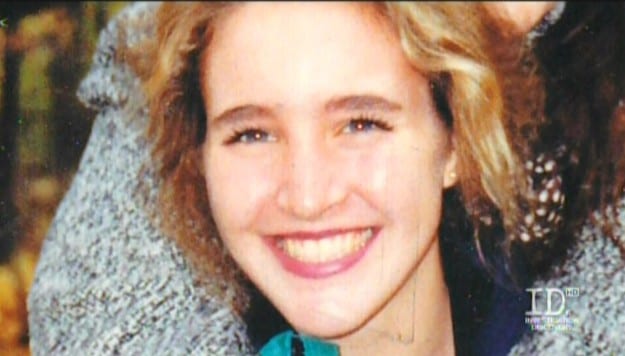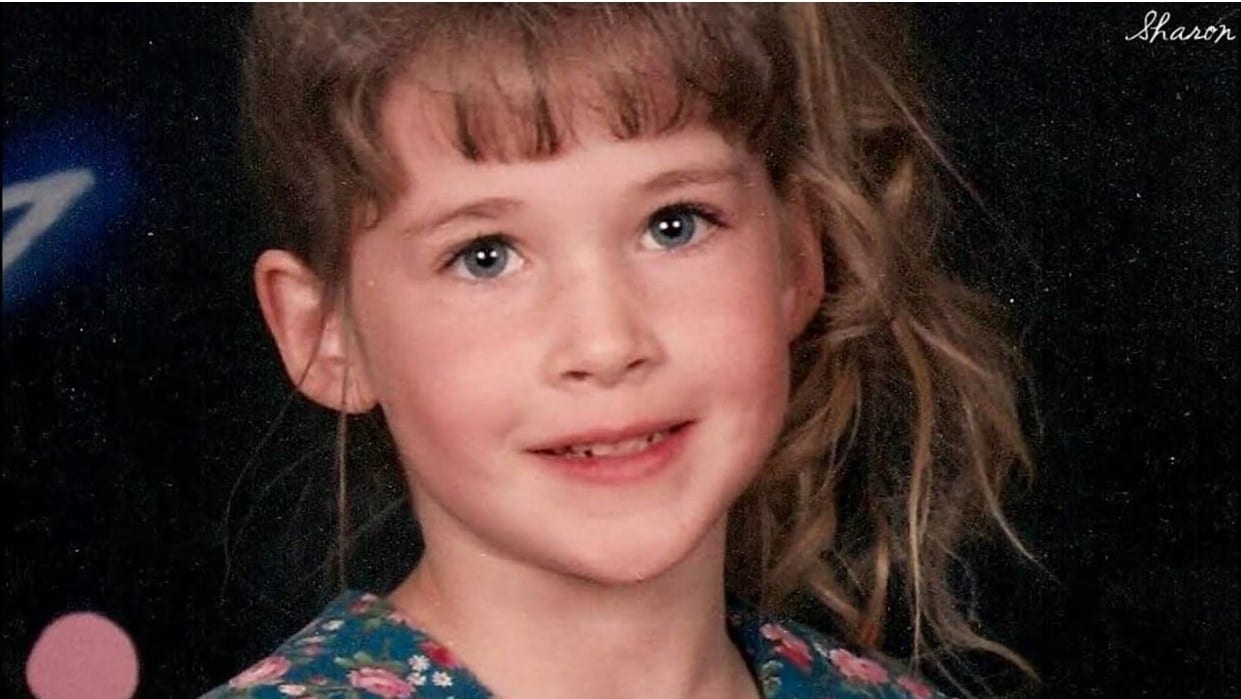
The Disappearance of Tricia Reitler and Many Others
(Tricia Lynn Reitler went missing March 29, 1993 from Marion Indiana. Photo courtesy of ID Discovery.)
In March 1993, Tricia Lynn Reitler, 19, was a freshman psychology major at Indiana Wesleyan University in Marion, Indiana. Teachers described Tricia as a beautiful and brilliant student with a high grade point average. Her future was bright until . . . she vanished without a trace.
(Map of Indiana Wesleyan University showing Marsh Grocery store.)
The Disappearance
During the early evening of Tricia’s disappearance on March 29, 1993, she was writing a term paper and decided to take a short break to walk to Marsh Supermarket, approximately half a mile from the university campus. According to investigators, while at the store, she purchased a root beer and a magazine leaving the store to return to her dormitory in Bowman Hall. She never made it back.
Her disappearance has been a jigsaw puzzle that has kept investigators baffled for 26 years. After extensive searches, police discovered Tricia’s bloodstained jeans, shirt, and shoes in a field near Seybold Pool and the Center Elementary School. Also, police found small droplets of blood on an earring on the sidewalk about a quarter mile between the store and the campus.
Tricia was a runner. In fact, she had taken two runs that unseasonably warm Monday in March. Her father, Garry Reitler believes her flexibility and fitness contributed to the difficulty the canine tracking dogs had. During the search, her scent was all over the place in the area where the abduction had occurred.
(Tricia Reitler’s parents Garry and Donna standing in front of a billboard on 41st Street and Western Avenue in 1998, five years after Tricia’s disappearance.)
One More Day
Tricia’s disappearance results in parents without a daughter, siblings growing up never knowing their sibling, and a town still looking for answers 26 years later. Still, many questions remain.
“It’s unbelievable, I mean you walk around kind of like you are in a daze,” said Donna Reitler, Tricia’s mother. Donna has spent decades coping by carrying on for her husband and other three children. But moving on hasn’t been easy because she feared “moving on” meant leaving Tricia behind and she just couldn’t do that.
(Tricia Reitler, a freshman psychology student vanished while walking to Marsh store in Marion, Ind. Photo courtesy of CNN.)
Donna told the Chronicle-Tribune, “You tell yourself, ‘Oh, just one more day. Just one more day,’ and here you are 26 years later.”
Both parents have coped differently, but have managed to keep their marriage together, defying all odds. “Somebody says they saw her, or they found something,” said Garry. “It’s a struggle but as a father, you have to go out and look, you have to exhaust all of those leads.”
Garry has often worked alongside law enforcement in the search for his daughter.
Their daughter has appeared on CNN, C-SPAN, Dateline, even The Jerry Springer Show. People have written books and even a movie made for television but that doesn’t matter to Garry and Donna — they just need answers.
(Dep. Chief Stephen Dorsey explains the timeline of Tricia Reitler’s disappearance using a board that tracks the police investigation for the last 26 years. Photo courtesy of Chronicle Tribune.)
Law Enforcement’s Frustrations
“It’s a case that’s been worked by multiple agencies for years. It’s still difficult, there’s no doubt about that,” retired Marion Police Detective Jay Kay. “I’ve always tried to stay positive. I’ve always believed sooner or later; the answers will come forward.”
Though the investigation may seem at a standstill, according to Marion County Deputy Chief Stephen Dorsey as of March 2019, police are reviewing new DNA samples in the case. Dorsey says police want to put Tricia’s abductor in prison, but also want to find Tricia to ensure she is returned to her family where she belongs. It’s something Donna and Garry admit they need too.
“Still this whole thing of going over and over different scenarios that could have happened or maybe we didn’t think of this or maybe we should have gone here or this or that; like I said that does not stop,” Donna said. “To be able to bring her home and put her to rest; it’s not going to change the outcome. Tricia will still be gone, but I think for our family we will be able to move on to a certain degree.”
The Reitler’s and police have followed up on hundreds of leads over the years and one person keeps coming up. “We’ve had a number of suspects over the years, one being Larry Hall, however, we don’t have any evidence that puts Larry into the mix of Tricia being missing,” said Dep. Chief Stephen Dorsey of Marion Police Department.
(Larry DeWayne Hall is serving a life sentence on a federal kidnapping charge.)
A Serial Killer?
Larry DeWayne Hall is currently serving a life sentence at a medium-security federal psychiatric prison in North Carolina for the 1993 abduction of Jessica Roach, 15, near Georgetown, Illinois, a short distance from the Indiana border. Her body was later found in the fall of 1993, in a cornfield near Perrysville, Indiana.
(Jessica Roach was abducted from Georgetown, Ill., on September 20, 1993. Her body found later that fall in a cornfield in Perrysville, Ind.)
Jessica Roach
Jessica was last seen at approximately 3:30 p.m. on September 20, 1993, riding her bicycle near her home in Georgetown.
Hall was never charged with Roach’s murder because police could not pinpoint where she was killed. According to federal court records, Hall signed a written confession that he kidnapped and killed Jessica Roach, but he has since recanted. Some believe Hall is responsible for killing up to 40 women and girls.
Christopher Hawley Martin, author of Urges: A Chronicle of Serial Killer Larry Hall describes Hall as being bullied as a child and as a juvenile bedwetter. Martin writes that Hall traveled the country in his van as a Civil War reenactment buff.
Raised in a big house on a cemetery in Wabash, Indiana, identical twins Larry Hall and Gary Hall’s father was the sexton (gravedigger) at the cemetery. Both brothers were Civil War reenactors who kept to themselves, traveling to many states in pursuit of their pastime.
During the research for his book, Martin began traveling the country and researched disappearances and unsolved murders of women around each of the Civil War reenactment event that Hall was known to have ventured. The picture that emerged was frightening — there were many.
Martin began corresponding with Hall in prison and was able to obtain information on other missing and murdered girls.
(Laura Depies went missing August 19, 1992, from Menasha Wisconsin and has never been found.)
Laura Depies
Laura Jean Depies, 20, worked a shift at Graffiti store at Fox River Mall in Appleton, Wisconsin. At approximately 10:00 p.m., Laura and a co-worker locked the store and walked to their cars in the mall parking lot. Depies was going to her boyfriend’s home and headed east on College Avenue in her 1984 Volkswagen Rabbit. She pulled into the Town of Menasha parking complex (now Fox Crossing) and parked. Her friends can remember hearing her pull in, but she never arrived at her boyfriend’s apartment. Once they realized time had elapsed, they immediately went outside and started searching while calling the police. The only physical evidence found at the scene was Laura’s drinking cup left on the hood of her car.
Hall told Martin he stalked mall parking lots, plazas and stores looking for victims. Hall then claimed he spotted Laura Depies at a store and followed her to the apartment parking lot where she was chloroformed and abducted. He then assaulted and killed her at a remote location, claiming he dumped her body in a wooded area.
According to Fox 8 News, during the investigation of Jessica Roach’s murder, police found notes in Hall’s van that said “Lori” and “Fox River.” Investigators then concluded that Hall attended a Civil War Reenactment in Kaukauna the weekend before Depies vanished.
Hall has never been charged with the potential abduction and murder of Depies because there is a lack of physical evidence to support his confession. Due to red-tape, Wisconsin law enforcement has been unable to get Hall to Wisconsin to show them where he claims to have dumped Laura’s body.
Mark Depies, Laura’s father, doesn’t believe Hall.
“I’m not buying that much at all,” Depies said. “especially without a body or anything to go on other than he confessed.”
However, Menasha Police Department have said Hall knows things about the abduction only the killer and police would know.
“The unfortunate thing is I only have memories of her first 20 years,” Laura’s mother Mary Wegner told ABC News. “I don’t know that you can ever really have closure . . . there are still some loose ends that I feel need to be followed up, including finding the remains of my daughter.”
(Paulette Webster vanished September 2, 1988, while walking home from a friend’s house in Chester, Ill.)
Paulette Webster
Martin decided to question Hall about the abduction of Paulette Webster missing from Chester, Ill., pm on September 2, 1988.
Hall claimed Paulette was taken from the main east/west roads through Chester which is where she was, in fact, walking home from her friend’s house at approximately 11:00 p.m.
He also claims to have picked Paulette up near a mobile home park, which again Martin found was true. Hall then said he took Paulette to a remote location where she was kept and sexually assaulted for several hours. Hall said he either threw her in the Mississippi River or buried her.
Letters from Jail
In the letter to Martin, Hall goes also claims there are several girls buried in the Mark Twain forest in Missouri. This information has led some to believe he may have abducted Stacy McCall, Suzanne Streeter, and Streeter’s mother Sherrill Levitt. Known as the Springfield Three, they were all abducted from their home on June 7, 1992, in Springfield, Missouri.
Halls claims to have begun murdering young girls and women in the summer of his high school graduation in 1981. While Hall’s stories and admissions are compelling, law enforcement is still at a standstill without any of the bodies to pursue any murder charges.
Thomas Lauth of Lauth Investigations International headquartered in Indianapolis, Indiana, is a 25-year veteran in the field of missing persons and missing person private investigator who believes there is some credence to Hall’s claims, however, he also points out there are other serial killers out there too. “The FBI estimates as many as 50 serial killers operating in the United States at any given time,” said Lauth. “When we are talking that serial killers can average 30-40 victims during their lifetime (if not more), that is not a small number of victims when combined.”
Meanwhile, the parents of Tricia Reitler, Laura Depies, Paulette Webster and the many others Hall has admitted to abducting wait through heart-wrenching and never-ending days for answers that will enable them to finally bring their daughters home.









